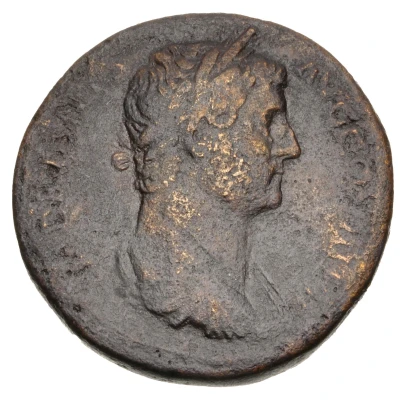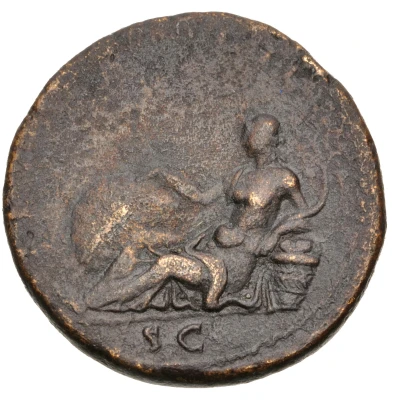


© Classical Numismatic Group, Inc.
Sestertius - Hadrian TELLVS STABIL; Tellus
| Orichalcum | 25 g | 32.5 mm |
| Issuer | Rome › Roman Empire (27 BC - 395 AD) |
|---|---|
| Emperor | Hadrian (Publius Aelius Hadrianus) (117-138) |
| Type | Standard circulation coin |
| Years | 133-135 |
| Value | 1 Sestertius = ¼ Denarius |
| Currency | Denarius, Reform of Augustus (27 BC – AD 215) |
| Composition | Orichalcum |
| Weight | 25 g |
| Diameter | 32.5 mm |
| Shape | Round (irregular) |
| Technique | Hammered |
| Demonetized | Yes |
| Updated | 2024-10-06 |
| Numista | N#256649 |
|---|---|
| Rarity index | 100% |
Reverse
Tellus, reclining left against basket of fruit, resting hand on globe and holding branch.
Script: Latin
Lettering: TELLVS STABIL
Translation:
Tellus Stabilita.
The earth firmly established.
Comment
Source: Online Coins of the Roman Empire (OCRE)Interesting fact
The Sestertius coin , which features Hadrian and Tellus (TellVS STABIL) on its obverse and reverse sides, respectively, was minted during a time of significant economic and military change in the Roman Empire. Specifically, it was issued during Hadrian's reign (117-138 AD), a period marked by a series of military campaigns, extensive building projects, and economic reforms. One interesting fact about this coin is that it was made of Orichalcum, a copper-based alloy that was commonly used for Roman coins during this time period. Orichalcum was valued for its durability and resistance to corrosion, making it an ideal material for coins that were meant to circulate widely and be used in everyday transactions. Despite its widespread use, however, Orichalcum was not as valuable as some other metals used in Roman coinage, such as gold or silver. As a result, coins made of Orichalcum, like the Sestertius , were generally of lower denominations and were used for smaller transactions.